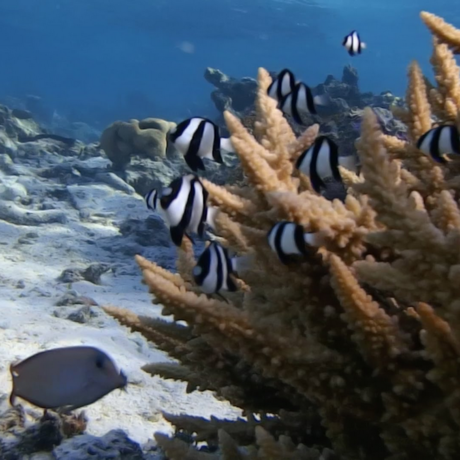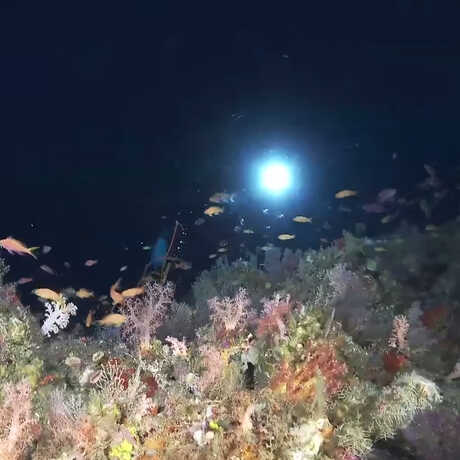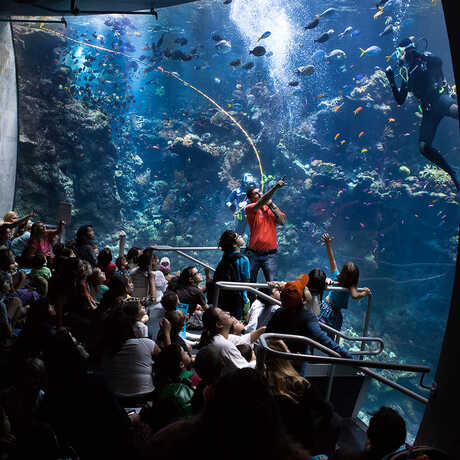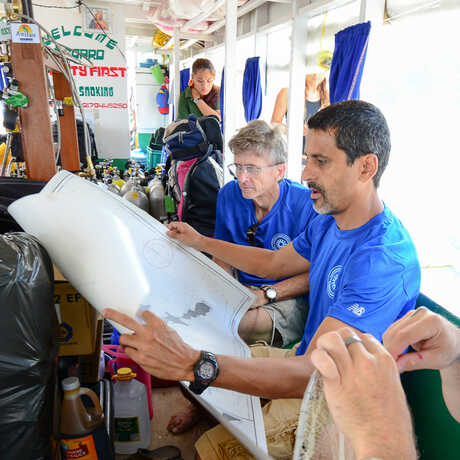Scientific Expeditions
2014 Philippine Biodiversity Expedition
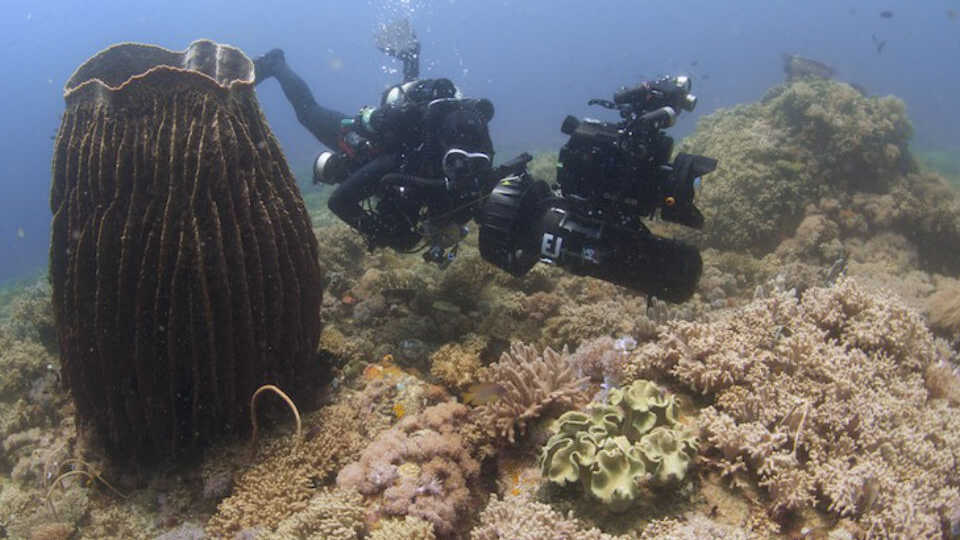
Our latest expedition to the Philippines was a continuation of more than a century of Academy research in and around this nation of some 7,000 islands. Focusing exclusively on marine habitats near the apex of the Coral Triangle, a multi-disciplinary team of scientists and aquatic biologists spent seven weeks in the first half of 2014 assessing and documenting the region's biodiversity—exploring dive sites and depths not yet studied.
Within the Coral Triangle is an area known as the Verde Island Passage—waters teeming with such an abundance of life that Academy scientists suspect it may be “the center of the center” of biodiversity. Our 2014 expedition sought to document the astounding life in the Verde Island Passage by collecting and identifying species not yet described (and in many cases never before seen) and creating a base of knowledge that will help to protect this area going forward.
Unexplored Depths
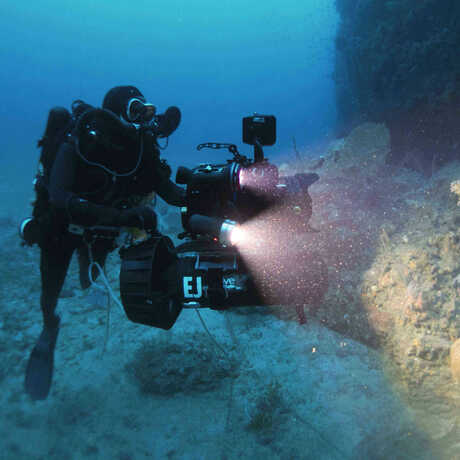
The 2014 Philippine Expedition included the first-ever survey of the Coral Triangle’s “twilight zone,” defined as depths of 40 to 150 meters (or 130 to nearly 500 feet). Using cutting-edge, mixed-gas rebreather diving technology, Academy crews explored habitats no human had entered before. The results of these dives are expected to be extraordinary; previous twilight zone dives in other parts of the West Pacific have yielded new-species discoveries at rates of 4.2–11.2 per hour.
Twilight zone exploration does more than yield new species, however—it also helps to answer some fundamental questions about the relationship between these deep reef communities and the shallow-water habitats directly above. By collecting material for molecular sequencing, researchers will be able to begin answering questions about the Verde Island Passage twilight zone itself, as well as its deep-sea denizens.
Implementing Change
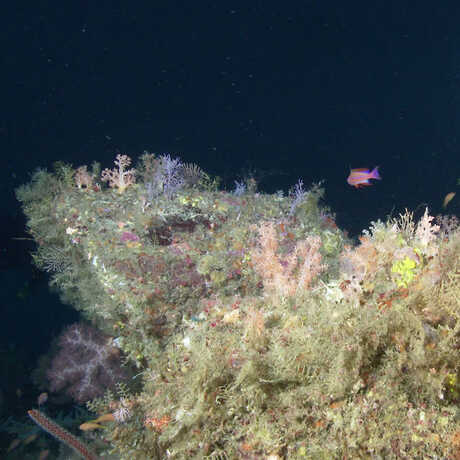
Philippine biodiversity faces severe threats from pollution, coastal development, global climate change, and non-sustainable fishing practices. To combat these dangers, the Academy developed a practice of rapidly translating data collected in the field into effective marine conservation actions. By working with Filipino and international governments, organizations, and communities, we’ve been able to create real-world change.
The 2011 Philippine Expedition resulted in recommendations for better regulation of existing Marine Protected Areas, as well as the establishment of new MPAs. Today, that work—in conjunction with community-based conversation projects—has recently begun to yield reversed degradation in coral reefs. While the threats still far outweigh any recovery, these comprehensive policies and practices have begun to slow the loss of biodiversity in the Philippines. Here at home, our work in the Philippines enriches and informs Academy exhibits, where it continues to reach millions of visitors, teachers, and students each year.
Spreading the Word
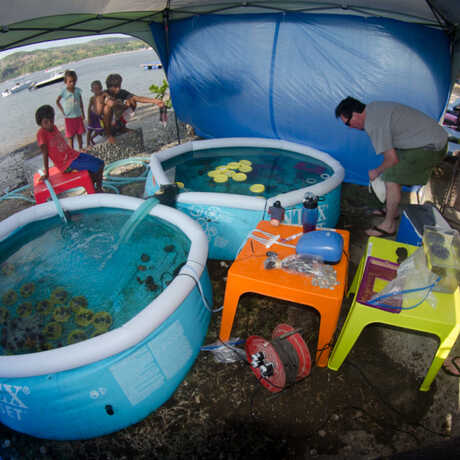
Raising public awareness about the richness of Philippine coral reefs—and about global biodiversity in general—has been a key priority since the Academy began research in this area. In addition to raising that general awareness (through local and international media, outreach programs, and public exhibits), the Academy works with local and international partners to establish areas of high priority for conservation. To prepare for the future, the Academy also trains students from the U.S. and the Philippines in field techniques and data capture, building both countries’ future abilities to make sound conservation decisions.
We've learned a lot about the factors that contribute to marine biodiversity (from geological stability to deep currents that deliver nutrients), but our understanding of biodiversity itself—especially in mega-diverse areas like the Coral Triangle—is still in its infancy. Philippine coral reefs stands to revolutionize our thinking about marine biodiversity, but only if we, in collaboration with the Philippine people and government, move quickly to document and protect it.
The mission of the Academy's Institute for Biodiversity Science and Sustainability (IBSS) is to gather new knowledge about life's diversity and the process of evolution—and to rapidly apply that understanding to our efforts to regenerate life on Earth.
Learn more about the expedition as it happened in these personal accounts from Academy research and outreach staff.
